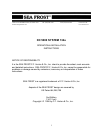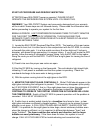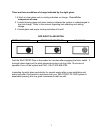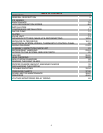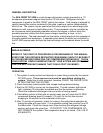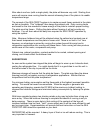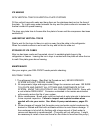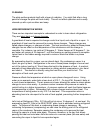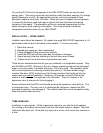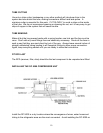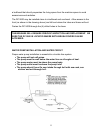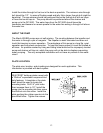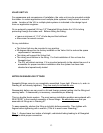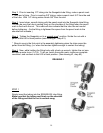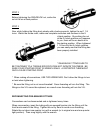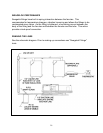
9
By causing R-134a to boil (evaporate) in the SEA FROST plate, we use the heat
energy there. This activity cools the liquid solution within the plate, causing it to change
phase (freezing to a solid). By freezing this solution, we have increased its heat
absorption capacity more than 100 times. When the cycle is stopped (the compressor
is turned off) the frozen plate will begin to absorb the heat that leaks through the
insulation in the icebox. The absorption will be at a constant temperature until the
phase change to liquid (melting) is complete. This is the principle of holdover
refrigeration and the function of your SEA FROST.
INSTALLATION ~ WORK HABITS
Installer's care should be stressed. No matter how good SEA FROST equipment is, it's
performance and life are in the hands of the installer. To insure your work:
1. Read this manual.
2. Reread any aspect you don't understand.
3. Follow Swagelok fitting instructions carefully.
4. Install the RFD last and the same day the system is charged.
5. Spend enough time leak checking to be sure there are no leaks.
6. Thanks from all of us who have to guarantee your work.
There are two contaminants that will give you problems in a refrigeration system. They
are WATER and DIRT. Moisture in the air is always present and cannot be eliminated;
water in this case refers to puddles and drops. Dirt is any solid. The installer's habits
will be most important in ensuring a trouble-free start-up. We have added a large
receiver filter drier (RFD) to take care of all dirt and moisture that might get into the
system during a careful installation. Moisture in the system is boiled off when the
system is evacuated, or it is captured in the desiccant. There is a screen in the
expansion valve to prevent dirt from plugging it.
Excess moisture that the RFD can't handle will plug the expansion valve with ice. This
ice stops the cycle. The only cure is to discharge the refrigerant, replace the RFD,
evacuate the system, and recharge it. This remedy takes time and is somewhat costly.
Keep the system clean and dry!
TUBE HANDLING
Installation is quite simple. All the copper tube comes to you with the ends capped.
Any routing of the tubing must be done with the tube either taped or capped. Cap both
tube ends after each cut. Work with only one line at a time, and uncap only one end at
a time.



